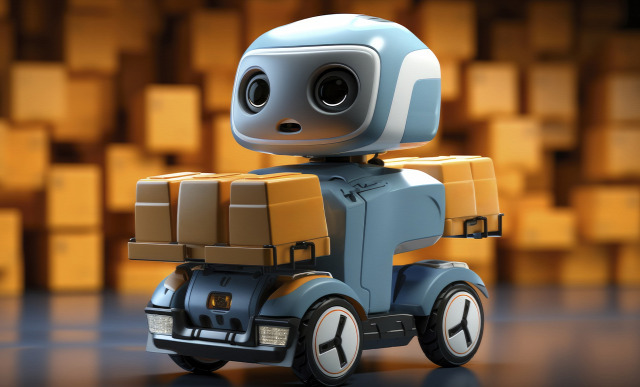
Last-Mile Delivery, the final leg of the delivery process from a distribution center to the end customer, represents a critical and often challenging aspect of logistics operations. In recent years, the emergence of delivery robots has transformed the last-mile delivery landscape, offering a cost-effective, efficient, and environmentally friendly solution to meet the growing demand for e-commerce and urban deliveries.
The global market of last-mile delivery robots are experiencing rapid growth as businesses seek innovative ways to streamline delivery operations, improve customer experience, and address the challenges of urban congestion and pollution.
According to BIS Research, the Global Last-Mile Delivery Robot Market was valued at $18.1 million in 2021, and it is estimated to reach $36.2 million by 2032 at a compound annual growth rate (CAGR) of 6.22% during the forecast period 2022-2032.
The Rise of Last-Mile Delivery Robots
Last-Mile Delivery Robots, also known as autonomous delivery robots or ground drones, are self-driving vehicles equipped with sensors, cameras, and navigation systems that enable them to navigate sidewalks, crosswalks, and other urban environments autonomously. These robots are designed to deliver parcels, groceries, meals, and other goods directly to customers' doorsteps, offering a convenient and contactless delivery option for online shoppers and urban residents.
Future Market Dynamics
Several factors are driving the growth of the global last-mile delivery robot market:
E-commerce Boom:
- Rapid growth of e-commerce leads to increased parcel deliveries.
- Last-mile delivery robots offer efficient solutions for e-commerce.
- Cost-effective alternative for small, lightweight packages, urban deliveries.
Urbanization and Congestion:
- Urbanization causes traffic congestion and pollution.
- Challenges for traditional delivery vehicles in dense urban areas.
- Last-mile delivery robots operate on sidewalks, bypassing traffic.
Technological Advancements:
- Robotics, AI, sensors, and battery tech fuel innovation.
- Enable robots to navigate, avoid obstacles, and interact safely.
- Improves performance, reliability, scalability, driving adoption.
Want to excel in the market? Download our FREE sample report (PDF) on Last-Mile Delivery Robot Market Research.
Last-Mile Delivery Robot Market Segmentation
Segmentation by Robot Type:
- Wheeled Robots
- Legged Robots
Segmentation by Payload Capacity:
- Small Payload (Up to 10 kg)
- Medium Payload (10-50 kg)
Segmentation by End-User:
- E-commerce and Retail
- Logistics and Delivery Providers
Market Challenges and Opportunities
While the global market of last-mile delivery robot presents significant opportunities for growth and innovation, several challenges must be addressed, including:
Regulatory Uncertainty:
- Regulatory frameworks vary by region, posing barriers.
- Clear guidelines needed for safety, liability, privacy.
- Ensure responsible integration into urban environments.
Technical Limitations:
- Challenges include limited battery life, navigation accuracy.
- Obstacle avoidance in complex environments.
- Research and development efforts needed for improvement.
Public Acceptance:
- Crucial for successful deployment and adoption.
- Educate the public about benefits, safety features, ethics.
- Build trust and acceptance among consumers, pedestrians.
Conclusion
The Global Last-Mile Delivery Robot Industry is poised for exponential growth as businesses and urban communities embrace innovative solutions to address the challenges of urbanization, e-commerce growth, and sustainable mobility. By leveraging advanced robotics, AI, and automation technologies, last-mile delivery robots offer a scalable, efficient, and environmentally friendly solution to meet the evolving needs of modern logistics and e-commerce. As delivery robots continue to evolve and expand their presence in urban environments, stakeholders across industries must collaborate to address challenges, ensure regulatory compliance, and unlock the full potential of last-mile delivery robots for a more sustainable and connected future.

